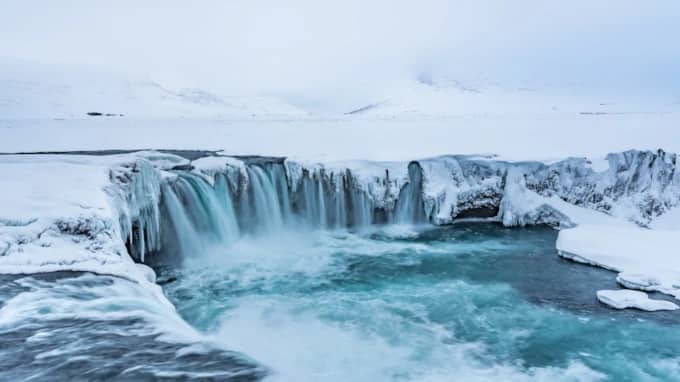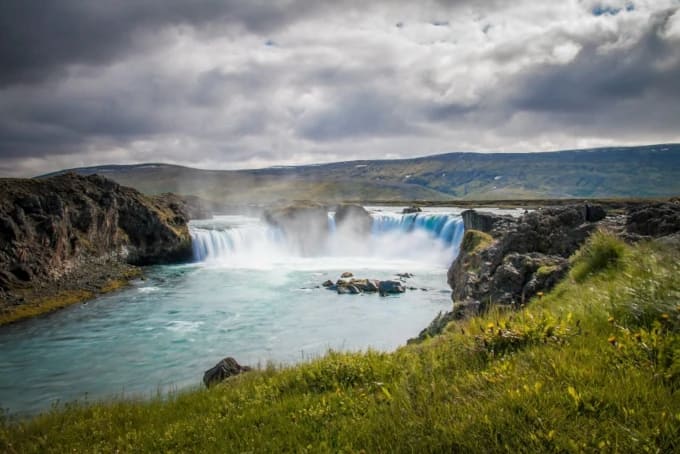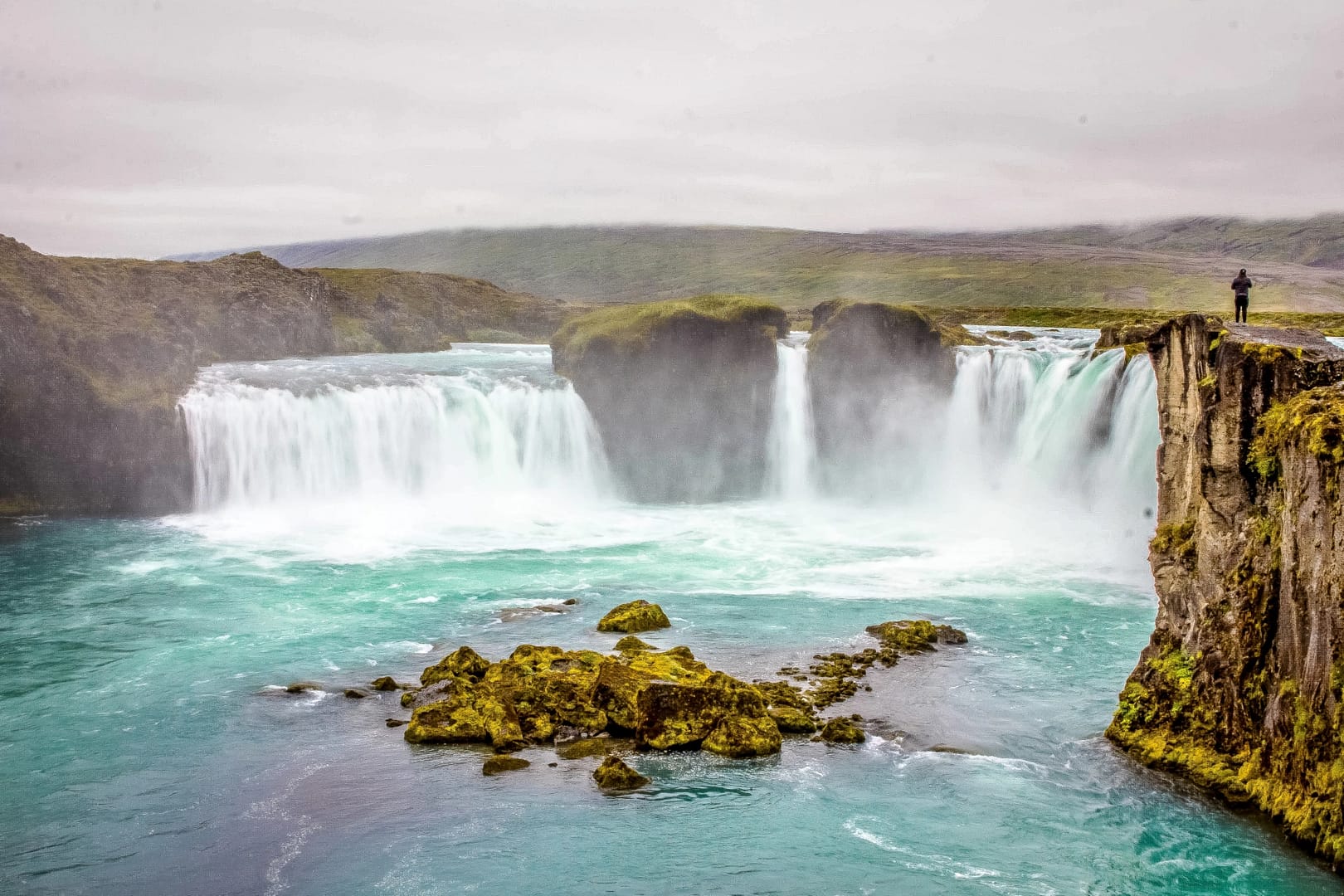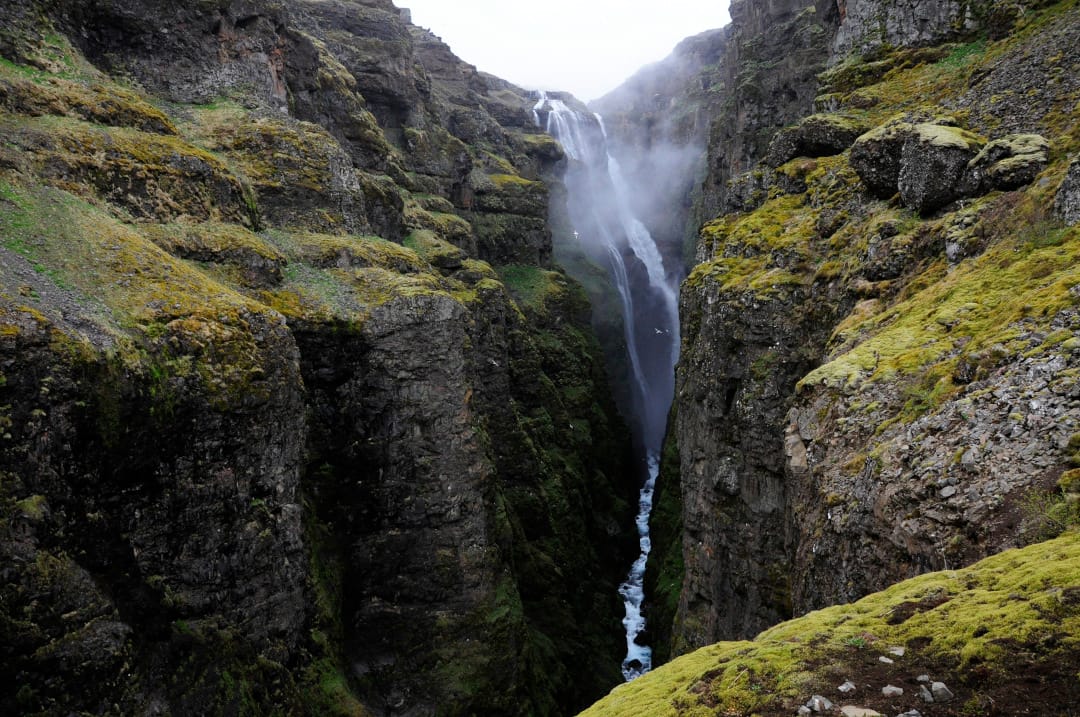ABOUT GOÐAFOSS
The name Goðafoss translates to “the waterfall of the Gods,” and it is pronounced “GO-thuh-foss.” As the name implies, Goðafoss is rich in history and legend. Goðafoss stands only at 37 feet (5 m) but shows its might across 357 feet (158 m). Fortunately, you do not need to travel to the land of the gods to view this waterfall. Goðafoss is located in Northern Iceland and can be found right off the ring road, making this one of Iceland’s most accessible waterfalls.
The glacial river, Skjálfandafljót, feeds the horseshoe-shaped waterfall. The river is one of the largest in Iceland and originates from Vatnajökull. Vatnajökull is Iceland’s largest ice cap, which in return helps make Goðafoss one of Iceland’s most powerful waterfalls. Oddly enough, part of the Skjálfandafljót river bypasses Goðafoss with a split right before the fall. Still powerful, Goðafoss doesn’t even have the full might of the river behind it.
The Skjálfandafljót river runs through a lava field dating back to 7,000 years ago, which only adds to the waterfall’s legendary status. The lava field was created by the Trölladyngja volcano, Iceland’s largest shield volcano. Trölladyngja is still active to this day.
Goðafoss is also one of Iceland’s most beautiful waterfalls and even attracts visitors all year long. The Skjálfandafljót river can change colors depending on the day or season. The colder months make the water a beautiful blue and gray hue. The glacial river’s volume increases and becomes more turbulent during the spring, creating a brown hue. While still an impressive waterfall all year long, some Icelanders claim that winter is when Goðafoss shows its true beauty. For more winter waterfalls you can visit, check our list here!
History of GOÐAFOSS

There is no official record of how Goðafoss got its name, but of course, legends surround the “waterfall of the gods.” While it hasn’t’ been proven, Goðafoss may be involved with a critical moment in Iceland’s history. In the summer of 1000, Iceland determined which religion to follow, Norse paganism or Christianity. Iceland’s society was still pretty young, and this split threatened the country’s future growth. Each side had representation in the Parliament via what was known as a Law Speaker. Þorgeir Ljósvetningagoði was the pagan Law Speaker, but he was also a very influential person due to him being a Chieftain. Ultimately, it was decided that Þorgeir Ljósvetningagoði would choose which religion to follow. After pondering, Þorgeir decided that Icelanders should adopt Christianity, but allow pagans to practice in secret. This was a turning point in Iceland’s history and helped put a violent past behind them.
The most common tale is that Þorgeir Ljósvetningagoði returned home and took his pagan idols from his temple, which he then cast over the waterfall. Thus Goðafoss earned its name. Unfortunately, the oldest records show that this story only dates back to the 19th century. The history of Þorgeir Ljósvetningagoði is much older, thus making this likely a fabrication.
GOÐAFOSS hiking trail
Goðafoss doesn’t offer much of a hike but instead an easy walk. The entire trail is 1.8 miles (2.9 km), but the waterfall is viewable close to the start. The trail does take you along both sides of the beautiful Skjálfandafljót river. Geitafoss is another waterfall you can encounter on this hike. While smaller than Goðafoss, Geitafoss is still powerful and impressive!
Goðafoss is also part of the Dimond Circle, the northern counterpart to the Golden Circle. The Dimond Circle is 177 miles and offers other waterfalls such as Dettifoss and Hafragilsfoss.
How to get to GOÐAFOSS

- Goðafoss is well marked and easily accessible with Google Maps.
- Head north via the Ring Road (HWY 1).
- The drive is around 5 hours from Reykjavík.

